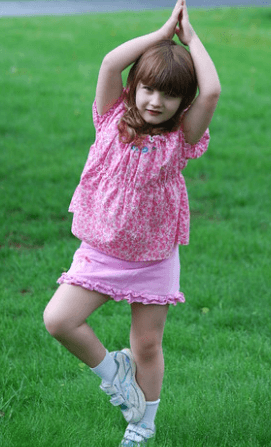As adults, many of us have integrated yoga into our lives. However, the question that often arises is: When Can A Child Begin Practicing Yoga? This is because we are acutely aware of the manifold benefits that yoga brings, and we want our children to imbibe these virtues early on.
We want them to develop physical strength, emotional resilience, and the ability to focus and concentrate, all of which are essential life skills.
We believe in the power of yoga to nurture these traits, and hence, the query regarding the right age for children to start yoga becomes critical.
Yoga can be introduced at any age, even to infants with the help of parents or caregivers. However, the type of yoga and the poses should be age-appropriate and safe for the child.
The Power of Yoga
Yoga is a holistic discipline, more than just a physical workout. It introduces mindfulness and the understanding of the body’s capabilities, and it fosters an awareness of the breath, which is essential for maintaining emotional balance. All these elements can be beneficial to children, but what is the Appropriate Age for a Child to Start Yoga?
Starting Yoga – The Age of Flexibility

For infants, yoga can be as simple as gentle movements and stretches guided by the parent. As children grow into toddlers and preschoolers, they can start learning simple yoga poses and breathing exercises. School-aged children and teenagers can engage in more complex yoga poses and sequences.
Yoga could be introduced to children as early as two or three years old. This is the age when children start to develop motor skills and begin to understand instructions.
In these early years, yoga sessions should be brief, fun, and game-like. Picture books and animated videos can be helpful tools for introducing yoga poses.
The toddler years are also when children are remarkably flexible, and their muscles and joints are still developing. However, yoga for children at this stage should never be about attaining perfect poses. Instead, it should be about exploring movements, fostering creativity, and having fun.
Yoga for School-Aged Children
As children grow older and start attending school, they can begin to understand and appreciate the more complex aspects of yoga.
By the age of 5 or 6, children are usually ready to start practicing more complicated poses and sequences.
For school-aged children, yoga can be a helpful tool to cope with stress, peer pressure, and the physical and emotional changes they experience.
Additionally, the practice of mindfulness and meditation can provide them with essential coping strategies for everyday challenges.
Yoga sessions for this age group can be longer, involving more structured poses and sequences, and introducing meditation and relaxation exercises.
Yoga for Teens
By the time children reach their teenage years, they can participate fully in most adult yoga classes.
Teenagers can handle more advanced poses and longer meditation sessions. They can also delve into the philosophy of yoga and its ethical principles (yamas and niyamas) that can guide them through these turbulent years.
Yoga can become a tool for self-exploration, self-confidence, and the development of a strong and healthy body image.
Health Benefits of Yoga for Children
Numerous studies have highlighted the benefits of yoga for children. These include enhanced concentration, better body awareness, improved self-esteem, and stress relief. Yoga can also support better sleep patterns, promote healthy eating habits, and encourage a more active lifestyle. In fact, some studies suggest that yoga may help children with attention deficit hyperactivity disorder (ADHD) and autism, by improving their focus, patience, and self-control.
It’s important to note that while children can start yoga at a young age, the sessions should be adapted to their developmental stage and needs. Certified children’s yoga instructors have the knowledge and skills to ensure that the poses and sequences are safe and beneficial for children.
Conclusion
So, What Is the Suitable Age for a Child to Engage in Yoga? The answer is, as early as two or three years old, but with a lot of emphasis on fun, creativity, and the exploration of movement rather than the perfection of poses. As the child grows, the complexity and structure of yoga sessions can evolve as well.
Remember, yoga is more than just physical exercise. It’s a pathway towards self-awareness, balance, and peace. Introducing your child to yoga can provide them with valuable tools for navigating through life’s challenges. And perhaps most importantly, practicing yoga with your child can foster a deeper connection between you, making it a truly rewarding experience for both.
